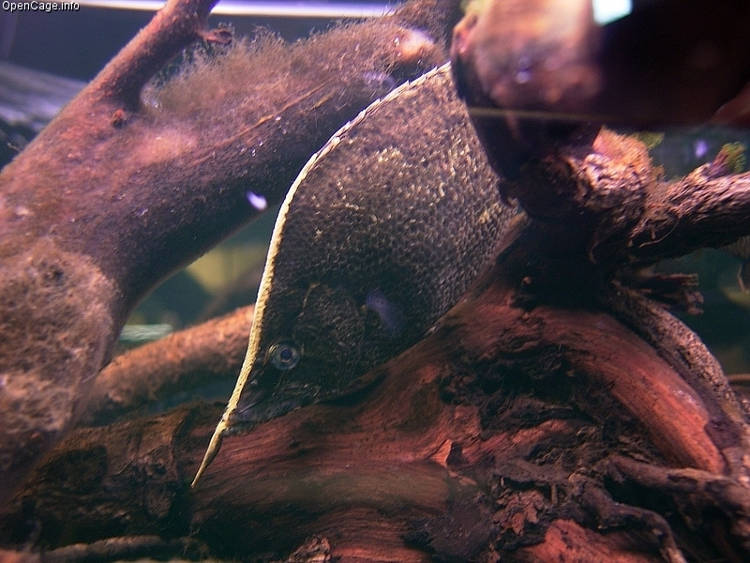The South American Leaf Fish is a remarkable predator that relies on almost perfect camouflage and patience to both ambush unsuspecting prey, and escape larger predators.
Native to the Amazon basin in Bolivia, Brazil, Colombia, Peru and Venezuela, the aptly-named leaf fish does a great job of imitating a dead leaf floating near the bottom of the river. Not only has it evolved to resemble a dead leaf almost perfectly, down to tiny details like the filament at the tip of the lower jaw that resembles a leaf stalk, but it also behaves like a leaf. The leaf fish bends and sways, but rarely moves upright, just as a floating leaf would not, and often angle themselves facing downwards, so that it looks like a dead leaf floating in the water.

Photo: Daiju Azuma/Wikimedia Commons
With its flat, leaf-shaped body, characteristic dark brown coloring, and the art of mimicking the movement of a dead leaf in the water, the South American leaf fish becomes almost invisible both to its prey (mostly invertebrates and smaller fish) and larger predators. After all, what self-respecting predator would go after a dead leaf in the water?
View this post on Instagram
Apart from its fascinating mimicry, the leaf fish also has a very intriguing hunting technique, that sees it instantly extending its jaws and drawing in water, along with its victim, as soon as it gets close enough. Although the prey of the leaf fish usually measure a third of its body, it can also suck in victims two thirds of its body in length. It can easily consume its own body weight in a single day.
View this post on Instagram
According to Practical Fish Keeping, the leaf fish was discovered in the 1920s, back when documenting species involved poisoning an entire stream and seeing what came up to the surface. It was only by chance that someone noticed a peculiar leaf with an extended mouth among the other real leaves floating in the water.
View this post on Instagram
As aquarium pets, the South American leaf fish are considered very demanding, as they require the water to be kept as close to wild conditions as possible, and, being born predators, they are extremely hard to wean from live food. They also react badly to medications, so they should be considered a last resort.
View this post on Instagram
The dead leaf is a very popular thing to mimic in the wild, as we’ve previously seen moths perfectly resembling a curled, dead leaf, as well as a dead leaf butterfly, and, most recently, the amazing Malayan leaf frog.






